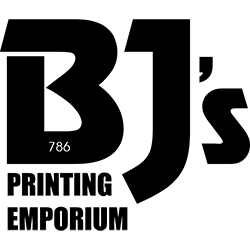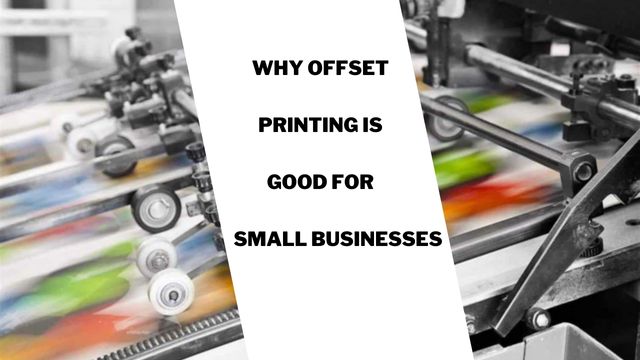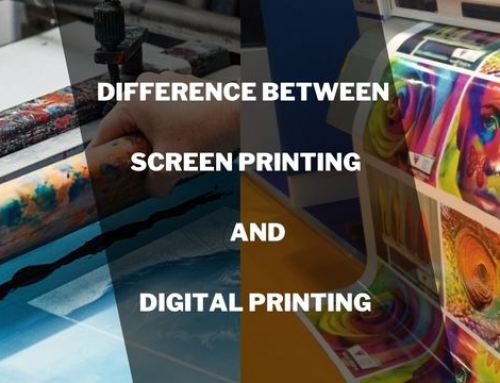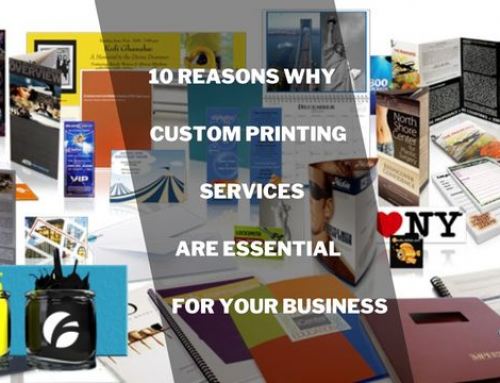In the age of digitalization, where everything seems to be moving online, it’s easy to overlook the power of traditional print media. However, for small businesses, offset printing remains a valuable tool for marketing, branding, and building customer relationships.
This article explores the numerous advantages of offset printing for small businesses, demonstrating why this tried-and-true method shouldn’t be underestimated.
1. High-quality Offset Printing: Increased brand authority of Small Businesses
Offset Printing offers exceptional high-quality prints that cannot be matched by most digital printing methods. The process uses metal plates and rollers to transfer ink onto paper, resulting in crisp, vibrant colors, sharp text, and fine details that are impossible to achieve with digital printers. This level of meticulousness is especially important for small businesses that want to project a professional and polished image.
2. Cost-Effective for Large Print Runs
While the initial setup cost for offset printing can be slightly higher than digital printing, the cost per unit significantly decreases as the print run increases. This means that for large orders, offset printing becomes significantly more economical. Offset printing offers a cost-effective solution for small businesses with high-volume printing needs, such as brochures, flyers, or catalogs.
3. Consistency and Accuracy
Offset printing ensures consistent and accurate printing throughout the entire print run. The metal plates ensure that each print is identical, eliminating variations in color or clarity that can occur with digital printing. This consistency is crucial for businesses that require precise branding and consistent messaging across different marketing materials.
4. Wide Range of Printing Options – Brings Customers For Small Businesses
Offset printing offers a vast array of printing options to suit various needs. From different paper types and finishes to custom sizes and unique embellishments, businesses can choose the perfect specifications to create impactful and visually appealing marketing materials. This flexibility allows small businesses to tailor their print products to their specific brand and target audience.
5. Durability and Longevity
Offset printing produces significantly more durable and long-lasting materials than digital prints. The high-quality ink and paper used in offset printing ensure that brochures, flyers, and other printed materials resist fading, smudging, and tearing, extending their lifespan and maintaining their professional appearance for a longer period.
6. Environmentally Friendly Options
The printing industry is constantly evolving, and advancements in technology have made offset printing a more environmentally friendly option. Printers are now using sustainable inks and paper stocks, minimizing waste and reducing the environmental impact of the process. This allows small businesses to choose eco-friendly printing solutions while still enjoying the benefits of offset printing.
7. Offset Printing Boost & Enhance Branding For Small Businesses
Creating a strong brand identity is essential for small businesses in today’s competitive landscape. Offset printing allows small businesses to create tangible, high-quality materials that elevate their brand perception and enhance the customer experience. A well-designed brochure or catalog printed with offset technology can leave a lasting impression on potential customers, fostering trust and brand loyalty.
8. Offset Printing: Increases Marketing Effectiveness For Small Businesses
Offset printing offers a unique opportunity to reach customers in a tangible way that digital marketing often fails to achieve. A well-designed printed piece can capture attention, deliver information effectively, and encourage engagement with your brand. This direct and personal approach can be highly effective in driving conversions and promoting your business.
9. Measurable Results and ROI
With offset printing, it’s easier to track the effectiveness of your marketing campaigns and measure the return on investment (ROI). By analyzing the response rate to printed materials, businesses can gain valuable insights and make informed decisions about future marketing strategies.
10. A Timeless and Trusted Tradition
Offset printing has a long and successful history as a trusted printing method. Its reliability, quality, and versatility have made it the preferred choice for businesses of all sizes for generations. By choosing offset printing, small businesses tap into a rich legacy and benefit from a proven method for creating impactful and effective marketing materials.
Conclusion
While digital marketing has become an important part of any business strategy, offset printing should be noticed. For small businesses, this traditional method offers a powerful and cost-effective way to create high-quality, visually appealing materials that can significantly impact branding, customer engagement, and marketing success. By leveraging the numerous advantages of offset printing, small businesses can stand out from the competition and achieve their marketing goals with greater efficiency and effectiveness.
FAQs
What is the role of offset printing in the DTP?
Offset printing acts like a bridge between digital design and physical output in DTP. Designs created in software are transformed into printing plates and applied ink onto paper to create the final printed material. Essentially, it takes digital creations and gives them a tangible form for wider distribution.
What kind of ink is used in offset printing?
Two main ink types are used:
- Heatset inks: Non-drying inks solidified on paper using heat, commonly used for high-volume printing on absorbent paper.
- Coldset inks: Quick-drying inks that are set at room temperature, preferred for non-absorbent paper like glossy paper.
Additional ink types exist for specific purposes, like metallic for a shiny finish or fluorescent for a glow under UV light.
What are the minimum order quantities for offset printing?
The minimum order quantity for offset printing varies depending on the printer and the specific printing project. However, it’s generally higher than digital printing, often ranging from 250 to 1,000 units. This makes it less suitable for small-scale printing needs.
How long does an offset printing project take to complete?
The turnaround time for offset printing is typically longer than digital printing, as it involves several pre-press steps like plate creation and press setup. The exact timeframe depends on the complexity of the project, print run quantity, and the printer’s schedule. Generally, anticipate a turnaround time of several days to a week.
What file formats are required for offset printing?
Offset printing requires high-quality vector-based files, such as Adobe Illustrator (.ai) or EPS (.eps), to ensure accurate and crisp printing. Raster-based images like JPEGs or PNGs may require additional processing to achieve desired results.







Leave A Comment